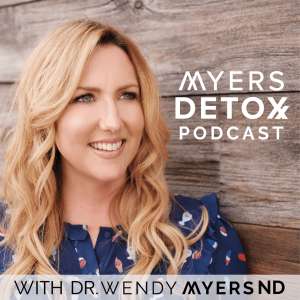
Paul Jaminet, PhD, talks with me about the foundations of his Paleo-based Perfect Health Diet. He and his wife, a cancer reseacher, spent seven years developing and researching the tenets of this diet. Transcript Click here to view the full transcript for #14 The Perfect Health Diet with Dr. Paul Jaminet. Both have successfully healed their own “middle-age” and chronic health problems with this diet and have learned a great deal about the benefits – and pitfalls – of the Paleo diet that they would like to share. Learn more about it on Perfecthealthdiet.com. Their Beliefs Disease, premature aging, and impaired health have four primary causes: malnutrition, food toxicity, evolutionarily discordant lifestyles, and chronic infections by bacteria, viruses, fungi, and protozoa. These causes go together. People who eat toxic, nutrient-poor diets are more likely to contract chronic infections and do not easily recover from them. Yet the body has amazing powers of recovery. On a healthy diet, the immune system can tackle and defeat most infections, especially with the aid of antimicrobial drugs. A diet like the Perfect Health Diet should be the first treatment option in most diseases and an adjunct to therapy in all. Paul and Shou-Ching Recommendations About 3 pounds [1.4 kg] of plant foods per day, including: About 1 pound [0.45 kg] of safe starches, such as white rice, potatoes, sweet potatoes, and taro; About 1 pound [0.45 kg] of sugary in-ground vegetables (such as beets or carrots), fruits, and berries; Low-calorie vegetables to taste, including fermented vegetables and green leafy vegetables. One-half to one pound [0.25 to 0.5 kg] per day of meat or fish, which should include organ meats, and should be drawn primarily from: ruminants (beef, lamb, goat); birds (especially duck and wild or naturally raised birds); Shellfish and freshwater and marine fish. Low omega-6 fats and oils from animal or tropical plant sources, to taste. Good sources include: butter, sour cream, beef tallow, duck fat; coconut milk or oil palm oil, palm kernel oil, olive oil, avocado oil, macadamia nut butter, almond butter, cashew butter Acids to taste, especially citric acid (lemon juice, lime juice, orange juice, grapefruit juice), lactic acid from fermented or pickled vegetables, vinegars, tannic acids from wine, and tomatoes. Broths or stocks made from animal bones and joints. Snacks or desserts from our pleasure foods: fruits and berries, nuts, alcohol, chocolate, cream, and fructose-free sweeteners like dextrose or rice syrup. By weight, the diet works out to about 3/4 plant foods, 1/4 animal foods. By calories, it works out to about 600 carb calories, primarily from starches; around 300 protein calories; and fats supply a majority (50-60%) of daily calories. In the shadow of the apple are foods forbidden because of their high toxin content. Notably: Do not eat cereal grains — wheat, barley, oats, corn — or foods made from them — bread, pasta, breakfast cereals, oatmeal. The exception is white rice, which we count among our “safe starches.” Rice noodles, rice crackers, and the like are fine, as are gluten-free foods made from a mix of rice flour, potato starch, and tapioca starch. Do not eat calorie-rich legumes. Peas and green beans are fine. Soy and peanuts should be absolutely excluded. Beans might be acceptable with suitable preparation, but we recommend avoiding them. Do not eat foods with added sugar or high-fructose corn syrup. Do not drink anything that contains sugar: healthy drinks are water, tea, and coffee. Polyunsaturated fats should be a small fraction of the diet (~4% of total calories). To achieve this, do not eat seed oils such as soybean oil, corn oil, safflower oil, sunflower oil, canola oil, or the like. We highly recommend certain foods for their micronutrients. These include liver, kidney, egg yolks, seaweeds, shellfish, Are toxic metals causing your fatigue and health issues? Find out by taking Wendy’s Heavy Metals Quiz at metalsquiz.com
view more
More Episodes
012345678910111213141516171819
Create your
podcast in
minutes
- Full-featured podcast site
- Unlimited storage and bandwidth
- Comprehensive podcast stats
- Distribute to Apple Podcasts, Spotify, and more
- Make money with your podcast
It is Free
- Privacy Policy
- Cookie Policy
- Terms of Use
- Consent Preferences
- Copyright © 2015-2024 Podbean.com






